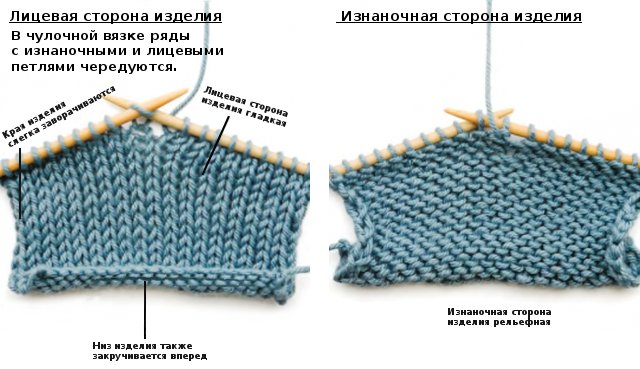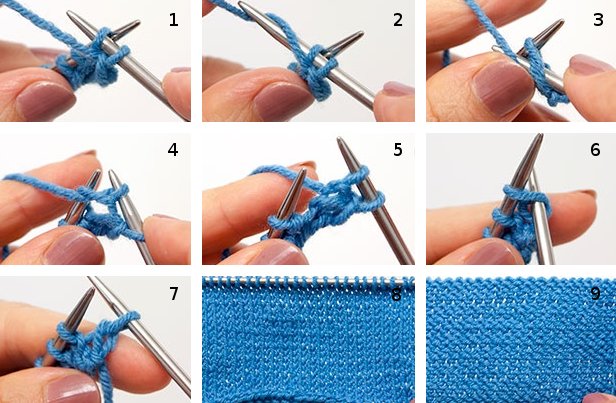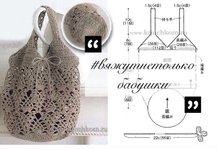
Hosiery is one of the simplest classic knitting methods. Like garter stitch, hosiery is the basis of knitting - for beginners it is enough to just learn how to create front and back loops, as well as master yarn crochets.
Hosiery has been known for a long time thanks to the knitting of a wide variety of hosiery. However, today it is actively used when knitting a much larger number of things from yarn. The finished pattern looks wonderful both in an independent form and as a background for more complex volumetric elements. Hosiery allows you to knit beautiful sweaters, cardigans, hats, scarves, gloves, vests and many other products.
Knitting with needles: diagram and description
A distinctive feature of hosiery is that it is one-sided, namely, it has the front and the wrong sides, which differ in the pattern. These parties are called front and wrong side. The front surface consists of vertical looped posts. The wrong surface is the horizontal arches of loops that resemble a thinner and denser garter stitch.

Having dealt with the features of this pattern, we will consider all the possible ways of knitting loops for it, and then directly the patterns and description for beginners in knitting hosiery knitting.
Knitting Methods
Before you start knitting this pattern, it is important to understand how to knit it and choose the most suitable one for yourself.
Hosiery is obtained through the alternation of odd front and even back rows. However, you can knit both front and back loops in two ways: classic and "grandmothers".
- Classic hinges
This basic method involves capturing the loop on the front side on the front side.

- Front loops in a non-classic way
This method, also called "grandmother", when for knitting the front surface of the loop is knitted with a grip on the back wall.

- Wrong loops in the classical way
In this case, the hinges are captured by the back wall (see photo of the diagram above).
- Wrong loops in a non-classical way
With the grandmother’s knitting method, the purl loops are caught on the back side.

Master class for beginners
How does knitting with knitting needles fit and how is it easiest for beginners to master? A master class in knitting of hosiery knitting will help beginners to understand the specifics of knitting this simple pattern.
Step-by-step scheme for knitting hosiery:

We collect loops on the knitting needle and knit the first (front) row of facial loops. We turn the work. We remove the first loop without knitting.
The second (wrong side) row will be knitted with wrong loops. Insert the right knitting needle into the middle of the loop on the left knitting needle. The working thread should be located in front of the knitting needle (photo 1).
We pick up the working thread with the right knitting needle and wrap it around the knitting needle, making a circular motion in a clockwise direction (photo 2).
We stretch the working thread through the loop from top to bottom, holding the thread with the thumb of the left hand (photo 3).
We pull out a new loop (photo 4).
We throw off the old loop from the left knitting needle. So continue to the end of the row (photo 5).
Again, turn the work to the front side. We see that the first loop of the row is the front. To form the “pigtail” edge, it also needs to be removed, as we removed the first wrong loop, only we need to do it differently. We introduce the right knitting needle from left to right behind the front wall of the loop (photo 6).
Adjust the size of the edge loops, pulling the working thread. It is necessary to ensure that the edge is smooth and not too loose, but also does not tighten the side edge (photo 7).
Important: for the formation of an edge in the form of a pigtail, the first loop of the row, if it is the front one, is removed for the front smelt without looping.
We continue to knit further: front (odd) rows with front loops, and wrong (even) rows with back loops. The result is a canvas knitted in stocking knit, which is also known as “front surface” or “jersey”. A characteristic feature is a different pattern on the front and back sides (photos 8 and 9).
Video lesson
A video lesson will help to quickly master the knitting process for beginners. It is especially useful to see how the pattern fits in all the ways we talked about earlier, because it will be easier to choose the most convenient knitting option for yourself.
Knitting with needles - video:


























